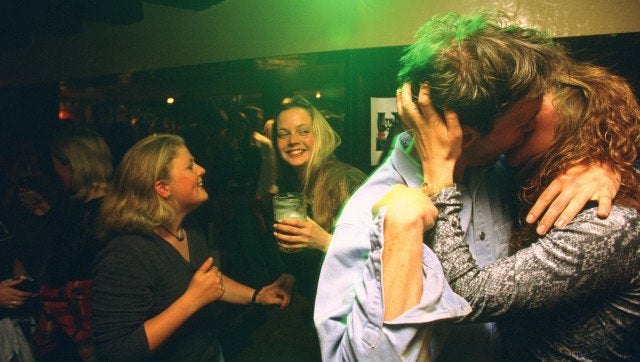
That is the gist of a new Discover article by Robert Epstein. He presents evidence that Americans are more sexually liberated when there is an excess of women relative to men at peak marrying age (in the mid-twenties). Political liberalism goes along with liberated sexuality and Tea-Party-type conservatism with prudery.
We all know that the sexual liberation of the 1960s was accompanied by a wave of political liberalism as typified by the Kennedy and Johnson administrations and student opposition to the Vietnam War.
By contrast, recent history has seen a resurgence of conservatism in politics beginning in the late 1990s and culminating in support for the Tea Party extremists. Sexual prudery has made a comeback also with censorship of sexual content on television, promotion of sexual abstinence, and renewed opposition to abortion and even contraception. Epstein explains each of these trends -- and much besides -- in terms of the sex ratio or proportion of males to females.
Guttentag's insight
This explanation was introduced by sociologist Marcia Guttentag and psychologist Paul Secord who argued four decades ago that if there is a scarcity of women, they get a better deal out of marriage in terms of stable unions and economic support from husbands. Of course, this also meant that they had no career and spent much of their time at home.
Conversely, if there are too many women, their bargaining power declines. Men get what they want in the relationship, including sex without much commitment. Guttentag thus attributes the rise in premarital sexuality during the sixties to an excess of young women in the population relative to men three years older (whom they prefer as dates and husbands). This mismatch was an echo effect from the post-World-War-II baby boom.
Facing a severe scarcity of appropriately aged men, women were effectively locked in a sexual arms race with competitors. They accepted sexual intimacy without commitment in a manner that would have horrified their chaste grandmothers. Hence the arrival of the so-called sexual revolution of the sixties facilitated by effective contraception that reduced the risk of unwanted pregnancy.
Sexual liberation is nothing new. Similar "revolutions" occurred in Chaucer's England where males were subtracted from the population due to wars and plagues and in the ancient Greek city state of Sparta where male infants were slaughtered if they seemed unsuitable material for warriors. Adult men served long spells fighting distant from home and many died.
Women in these societies were sexually assertive. Chaucer suggests that the (fictional) Wife of Bath's sexual needs put her five husbands in the grave, for example.
The beauty of Marcia Guttentag's insight is that it rescues sociology from the circular thinking of social trends causing themselves that is the orthodox perspective in the field. Instead, sexual liberation is interpreted as a response to objective marriage-market conditions.
Anywhere there is a severe scarcity of men, women compete over them by offering sexual intimacy without strings. Otherwise, if they are in demand themselves they will be more restrictive, possibly reserving sexual intercourse until after marriage.
This idea is simple enough. Yet, it implies a stunning level of flexibility in human sexuality in response to varied sex ratios.
Dads versus cads
One of the more remarkable discoveries about human sexuality is that both men and women adjust their mating efforts to what is available in their social environment. If college women perceive that there are plenty of 'dads" around, they act demure and emphasize their sexual modesty according to research by Elizabeth Cashdan (3). Conversely, if they see campus males as a bunch of cads interested only in one thing, they dress provocatively and engage in casual sexual relationships with various partners.
College men also respond to the sexual tone of their campus. On a "dad" campus, they emphasize their own career potential and capacity for academic success. On a cad campus, they party hearty.
It must be obvious that the cad strategy prevails where there are more women. Being less in demand, women enter into the spirit of men's penchant for recreational sex. On U.S. college campuses there are now only about 75 men per hundred women. So hooking up (some level of physical intimacy that lasts for just one night) has largely replaced dating (5). The sex ratio has spoken!
As to the future, Epstein predicts several decades of political moderation as the sex ratio is expected to avoid extreme swings. Relations between the sexes will be more balanced and middle-of-the road politics will prosper. Sounds good to me!
Sources
1. Epstein, R. (2012, October). Sex and the society. Discover, pp. 56-58.
2. Guttentag, M. & Secord, P. (1983). Too many women: The sex ratio question. Beverly Hills, CA: Sage.
3. Barber, N. (2002). The science of romance: Secrets of the sexual brain. Amherst, NY: Prometheus.
4. Barber, N. (2008). The myth of culture: Why we need a genuine natural science of societies. Newcastle, England: Cambridge Scholars.
5. Bogle, K. (2008). Hooking up: Sex dating and relationships on campus. New York: New York University Press.